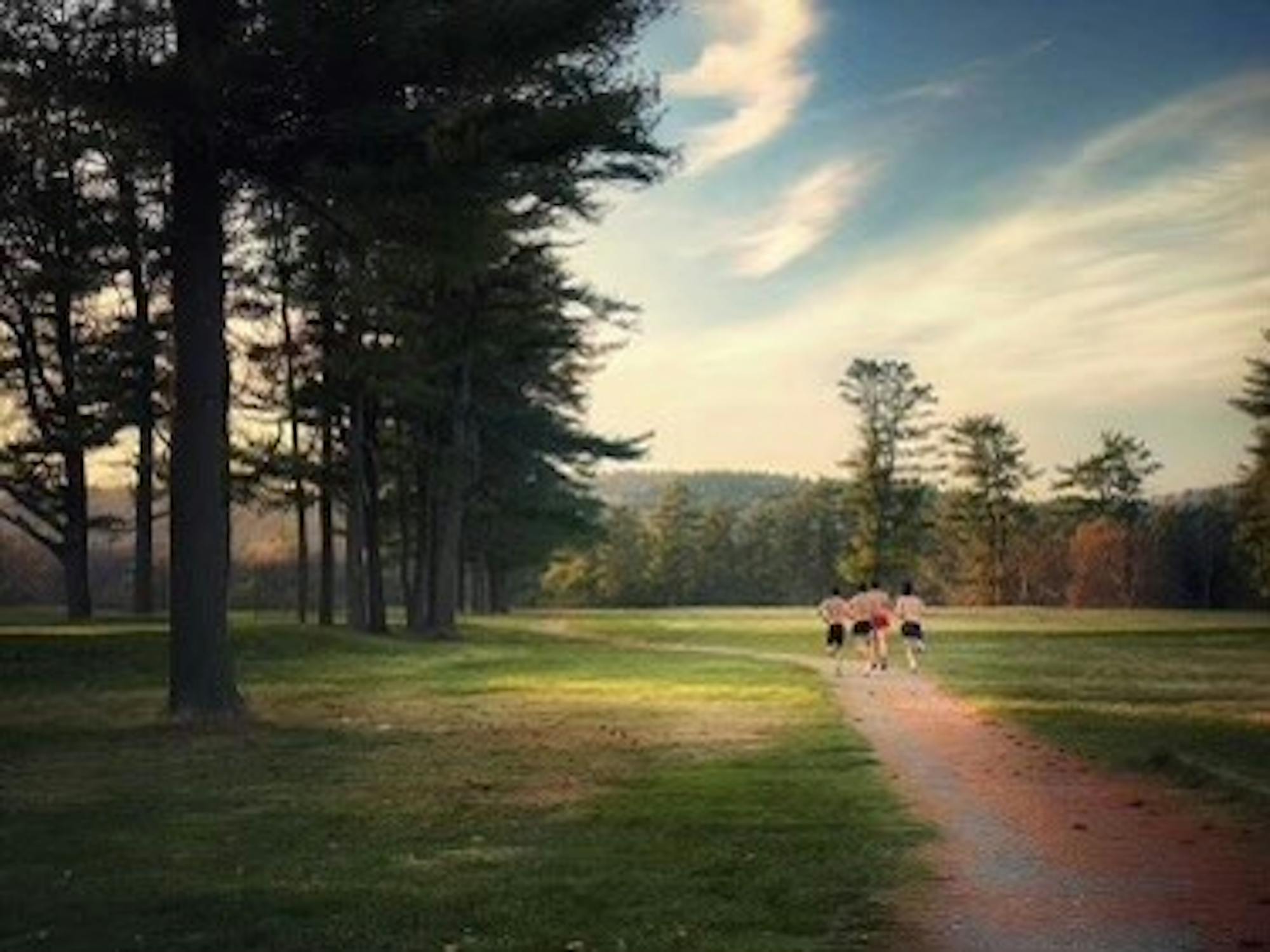As varsity long distance runners, we are always in season. Cross country starts in August before classes, indoor lasts through winterim and outdoor races continue into and after spring break.At the end of the outdoor season, however, our next race isn’t for another three months. Though this may seem like it would be an “off-season” for distance runners, this is the period in which we build base fitness and increase our mileage, making it into its own season.
This summer was my sophomore summer. However, unlike our classmates taking classes, my fellow ’24 cross country teammates and I lived in our team house in Hanover, working various jobs. While I worked a basic 9-5, one of my teammates conducted research in a lab while another spent his days chauffeuring a Hanover resident. Despite being all over the place during the day time, we would all meet everyday around 5 p.m. to run together.
Lacking the stress of homework and being removed from the constant overdrive of a regular academic term, we were able to make the most of our training. Our runs consisted of rolling and stretching our muscles to warm up, exploring new routes, jumping in the river on especially hot days and attempting to answer difficult “would you rather” questions posed by one of my more philosophical teammates. Even after our runs, we would chill in the locker room showers much longer than necessary to clean up until we wandered back home to make dinner.
While these easy days were blissful, the lack of competition enabled us to focus more on our workout days. Every Wednesday, my coach assigned us what he called a “quality medium-long run.” These workout days followed a similar pattern each week.
First, we’d bicker on when to run. Most of my teammates were strong supporters for later in the evening, around 6 or 7 p.m., because of the cooler temperatures. I advocated for us to go earlier in the day, at 3 or 4 p.m., arguing that the heat would increase our fitness — and so that I could get back in time to play pickup basketball. Second, we’d estimate how fast we would run. We took advantage of the broadly defined term “quality” and ran these runs pretty quickly. While some of us would say things like “I feel pretty tired today, let’s shoot for a sub-six minute mile average,” others would agree and then proceed to push the group to 5:30 miles by the end, dragging the rest of us with them. As we drove to the start of the route, we’d dramatize the run and joke that we were “gearing up to ride into battle.” We’d arrive at the rail trail, do our warmups and get rolling. Afterwards, we’d get in my car covered in sweat, dirt and dead bugs — who unfortunately got in the way of our stampede — and drive to the nearest gas station to buy out all the Gatorade they had.
As we continued to push mileage, a few injuries began to pop up. One of my teammate’s hamstrings began to bother him, while another’s Achilles flared up, and a third’s bowel issues resulted in them not finishing a few runs. Summer training for cross country is a bit like the story of Icarus. While you have the freedom to increase your mileage, if you do too much and fly too close to the sun, you will get injured. The question is, how close is too close?
I, for one, touched the sun in August. My body was feeling great, but after an unusually difficult 16-mile long run, I felt a bit of soreness in my knee. I didn’t pay much attention to it — when you’re running 80+ miles a week, you’re always sore. The next day, my knee hurt during my entire run and after I got back, I couldn’t walk. What started as a tiny nuisance turned into tendonitis in my Vastus Medialis Tendon — a tendon that connects your knee to your quad— after just one run. I could not run for three weeks and my daily runs with my teammates were reduced to being trapped inside the gym on an elliptical.
While this summer’s months of good health were the most enjoyable training I’ve had as a runner, we are now back to the regular mindset of always preparing for the next race. It is a tough transition — especially as I come back from this injury: you don’t realize how truly rusty you are until you are through the first mile of the first race of the year and think to yourself, “Oh shit, this hurts.” As the year begins and we are thrown back into the whirlwind of campus life — along with a few speed bumps the athletic department has placed in my team’s way — the Big Green cross country team is gearing up for this fall’s competition ready to push through the pain and challenges that come our way.




